Share
Working at ESO
Are you interested in working in areas of frontline technology and in a stimulating international environment? Do you feel your profile matches our requirements? Learn more about our current vacancies and apply online. Read more..
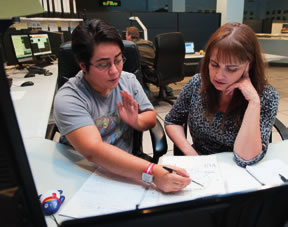
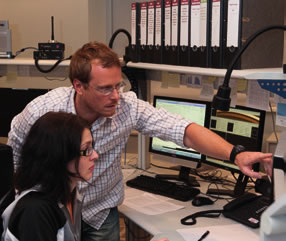
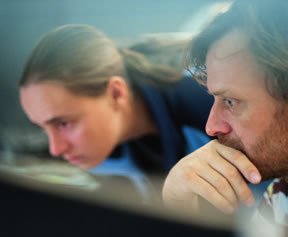
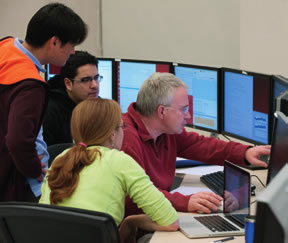
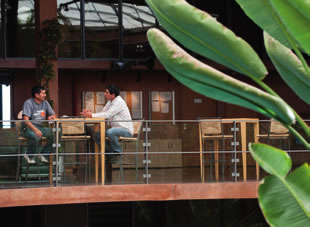
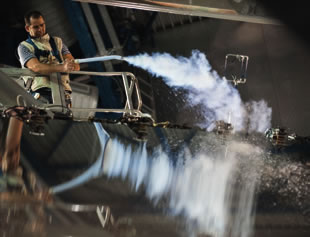
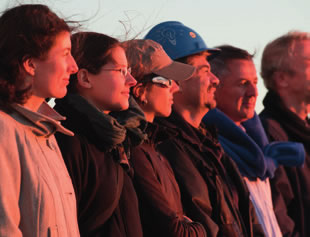
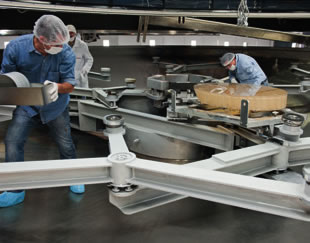
The European Organisation for Astronomical Research in the Southern Hemisphere (ESO) is the foremost intergovernmental astronomy organisation in Europe and the world's most productive ground-based astronomical observatory. ESO carries out an ambitious programme focused on the design, construction and operation of powerful ground-based observing facilities enabling astronomers to make important scientific discoveries.
ESO operates three unique world-class observing sites in northern Chile: La Silla, Paranal and Chajnantor (home to ALMA and APEX), and the ESO Headquarters are located in Garching, near Munich, Germany.
At Paranal, ESO operates the Very Large Telescope, the world's most advanced visible-light astronomical observatory. ESO is a major partner in ALMA, the largest astronomical project in existence. And on Cerro Armazones, ESO is building the 39-metre Extremely Large Telescope, which will become "the world's biggest eye on the sky" and whose operations will be fully integrated into the Paranal Observatory.
For its Maintenance, Support and Engineering Department (MSE) at the Paranal Observatory, ESO is inviting students from Chilean universities to participate in our program:
Summer Students Chile 2019
Paranal
Deadline 30/09/2018
The Engineering Department of the Paranal Observatory provides technical support to the four VLT 8-m telescopes, to the VLT Interferometer with its auxiliary telescopes and to all instruments available for scientific observations. The telescopes and instruments are complex systems that involve many advanced technologies and require a high level of engineering support. The MSE Department of Paranal has a total workforce of 80 engineers and technicians distributed in 6 engineering groups.
The six projects for the period January-February 2019 are the following:
I. Instrumentation group
Project: Validation and characterization of FIERA spare parts / 8x6 shift
The FIERA detector readout systems are still in use at Paranal in FORS2, UVES RED, UVES BLUE, FLAMES, OmegaCAM and NAOS VIS WFS. In case of hardware failure in any of these systems, we must be able to replace the faulty component in the minimum time possible and guarantee the system performance. Most of the spare parts available have not been tested thoroughly in a real detector system. To overcome this, a FIERA detector test bench with a E2V CCD has been installed in the detector lab. This system allows to test most of the boards with a scientific grade CCD in a real environment and detect deviations from the proper performance.
Objectives
- Validate the working condition of all FIERA spare parts (Commboards, Bias Boards, Clock Boards, Clock SIMMS boards, Video boards)
- Complete characterization of all FIERA spare video boards (working video channels, gain, readout noise per channel)
- Validation and characterization of spare parts for 2 complete set of Power Supplies.
- Prepare detailed report for each tested board.
Student Profile
- Students of last year in Electronics or Electrical Civil Engineering.
- Good working knowledge of python and Linux.
- Experience with handling delicate electronic boards.
- Some experience in soldering/desoldering SMD components.
II. System and Quality Assurance Group
Project: Quality of Work Tool Improvement / 8x6 shift
Related to QOW process carried out at Paranal, it is necessary to perform an improvement of the actual tool, which was created some time ago; a migration to another platform is necessary according to new requirements that are coming. This tool should follow standard SW language in line with MSE-PSW.
Objectives
- Review of actual tool used
- Migration to another language, according to SOW recommendations (most likely Python)
- Development of new features and implementation of the new tool
- Documentation process.
Student Profile
- Software Engineer, preferably, or advanced programming skills (Python, C++)
III. System and Optics
Project: Verification performance of monitoring data sources and routines / 8x6 shift
With the introduction of "Datalab" and the introduction of the first Python performance monitoring resources, it is necessary to verify that the system delivers the expected performance. This verification is crucial in order to provide continuous and up-to-date performance monitoring support with easy access to "Datalab".
Objectives
- Create a test plan in order to verify data integrity and performance of "Datalab".
- Execute the agreed and consolidated tests in order to verify the data integrity of the whole performance monitoring chain.
- Depending on the test results and in coordination with PSW propose and implement necessary improvements.
- In coordination with PSW work on the integration of new data sources into "Datalab".
- Create new performance monitoring notebooks and routines for UT and VLTI.
Student Profile
- Either SW / computer engineering or physics student with a strong background in python, matlab, databases and time series data analysis.
- Experience with database verification methods would be advantageous.
- S/he should be proficient in English.
IV. Mechanics Group
Project: Deployable light cover for Cassegrain instruments / 8x6 shift
During the daily calibrations, some instruments need low light conditions (in some cases dark) that don't permit the execution of the daily maintenance activities. A deployable cover that specifically reduce the light to the Cassegrain instruments could permit to switch on the lights of the telescope enclosures optimizing the availability of the telescope for maintenance purposes. Some tests have been already performed with a temporary installation for a better performing cover, some design activities should be done.
Objectives The candidate student should develop the following main activities:
- Develop the design of a deployable cover that could be installed quickly around the Cassegrain instrument
- Perform additional tests in collaboration with the astronomers to select the proper shielding material to be used to manufacture the cover
- Depending on the design, manufacture a reduce scale prototype or a full-scale cover to be tested.
Student Profile Civil mechanical engineer in the last 2 years of the career with knowledge and experience with AUTODESK Inventor software.
V. Knowledge Management
Project: Wikipages and operational databases product structure / mixed shifts (5x2 Stgo and 8x6 Paranal)
As part of our Information and Knowledge Management program, we need to improve the structure of the wikipages to allow a more reliable searching and create a common product breakdown structure for the operational databases.
Objectives
- Update the wiki system
- Implement a reliable and user-friendly search tool.
- Understand the tree structure of operational tools like PDM, MAXIMO and JIRA and how it can be modified through an external action. Develop such mechanism and test.
- With or without an automated mechanism, align the tree structure of those 3 operational databases.
- Check how this central tree structure can be applied in the wiki pages (keywords?) to link information there with the other databases.
- As best effort, to implement a prototype of QR code in a defined area/system to allow staff to access relevant information in the field.
Student Profile IT student or a SW/computer engineering student with background in IT systems.
VI. Software Group
Project: Technical Time Request tool / mixed shifts (5x2 Stgo and 8x6 Paranal)
This project aims at creating a SW tool/application to manage the Telescope Technical Requests (TTR) process. It will replace our current system that is completely manual, from filling a word document to generating the request, uploading it to wiki pages, finding approvals, etc. The new application and process will be more efficient, faster and will allow us to use easily all information in the TTRs because it will be centralized in a database. During the semester TTR call, a lot of manual work is required to analyze the information submitted, so the tool proposed would simplify these tasks.
Student Profile SW/programming engineering school/university, student in last-year of degree
We Offer
ESO offers a special allowance during the period you are performing your apprenticeship with us; transportation arrangements (plane tickets) from and to Santiago are provided by ESO, with accommodation provided on site. The Duty Station is Paranal Observatory, in the II Region, 150km South of Antofagasta.
The period of the apprenticeship is January-February 2019.
Application
We invite all students from Chilean Universities in their career's last period to apply. The apprenticeship should be supported by the University and therefore covered by the accident insurance (Law 16.744).If you are interested in working in areas of frontline technology and in a stimulating international environment, you are invited to apply online at http://recruitment.eso.org/. Applications must be completed in English and should include a motivational letter indicating the project(s) you are interested to apply to, and CV.
Closing date for applications is 30 September 2018.
The post is equally open to suitably qualified candidates irrespective of gender, age, disability, sexual orientation, race or religion.
